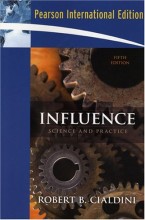Summary: Advanced Cn Suicidality Week 4
- This + 400k other summaries
- A unique study and practice tool
- Never study anything twice again
- Get the grades you hope for
- 100% sure, 100% understanding
Read the summary and the most important questions on Advanced CN suicidality week 4
-
1 ). Psychological and psychiatric aspects of brain disorder: Nature, assessment and implications for clinical neuropsychology
This is a preview. There are 26 more flashcards available for chapter 1
Show more cards here -
Name 5 psychological and psychiatric aspects of brain disorder
1. Depression
2. Anxiety
3. Apathy
4. Psychosis
5. Conversion disorder -
What hemisphere has a weak association with depression?
Right hemisphere -
Why is is difficult to state that depression is associated with epilepsy?
Medication treating depression can lead to seizures -
Why is panic complexly associated with epilepsy?
Fear is a common feature of partial seizures arising from temporal lobe damage -
What phobias are most common in epilepsy and why?
Agora and social phobia are most common. Social avoidance is used as a coping response for loss of confidence, perceptions of stigma, fear of falls or seizures -
What is a common anxiety after TBI?
Social avoidance and acute stress disorder and risk of PTSD long term -
What is a common anxiety following stroke?
agoraphobia and PTSD symptoms (predict health-related quality of life) -
What is common anxiety disorder reported in Parkinson disease?
Social anxiety -
In what neurological conditions is apathy common? Name 4.
1. TBI
2. Hypoxic brain damage
3. Right hemisphere damage
4. subcortical involvement -
Apathy is in one kind of dementia a defining factor. Which dementia?
Frontotemporal dementia
- Higher grades + faster learning
- Never study anything twice
- 100% sure, 100% understanding































